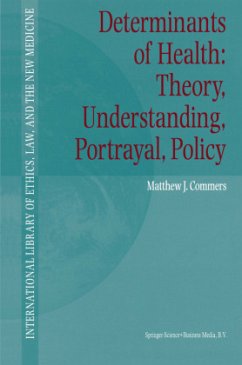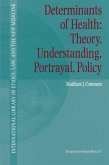For decades, health professionals have asserted the importance of public participation in interventions for health. Medicine has pursued patient participation in clinical decision-making. In the public health realm, target groups have been asked to assist in the design and implementation of initiatives for health. In practice, however, patients and populations expect health professionals to give advice and - in some cases - to make decisions on their behalf. This implies limits to the ideal of participation. In this innovative work, the author contrasts public and professional understandings of health and the best ways to achieve health. The result is a model of lay participation in the structuring of medical and public health activity. The book is unique due to its policy-applicable, quantitative studies and its theoretical analysis of works by René Dubos and Aaron Antonovsky. It will be of value to professionals in health promotion, health education, medical anthropology, and social epidemiology.
Bitte wählen Sie Ihr Anliegen aus.
Rechnungen
Retourenschein anfordern
Bestellstatus
Storno








